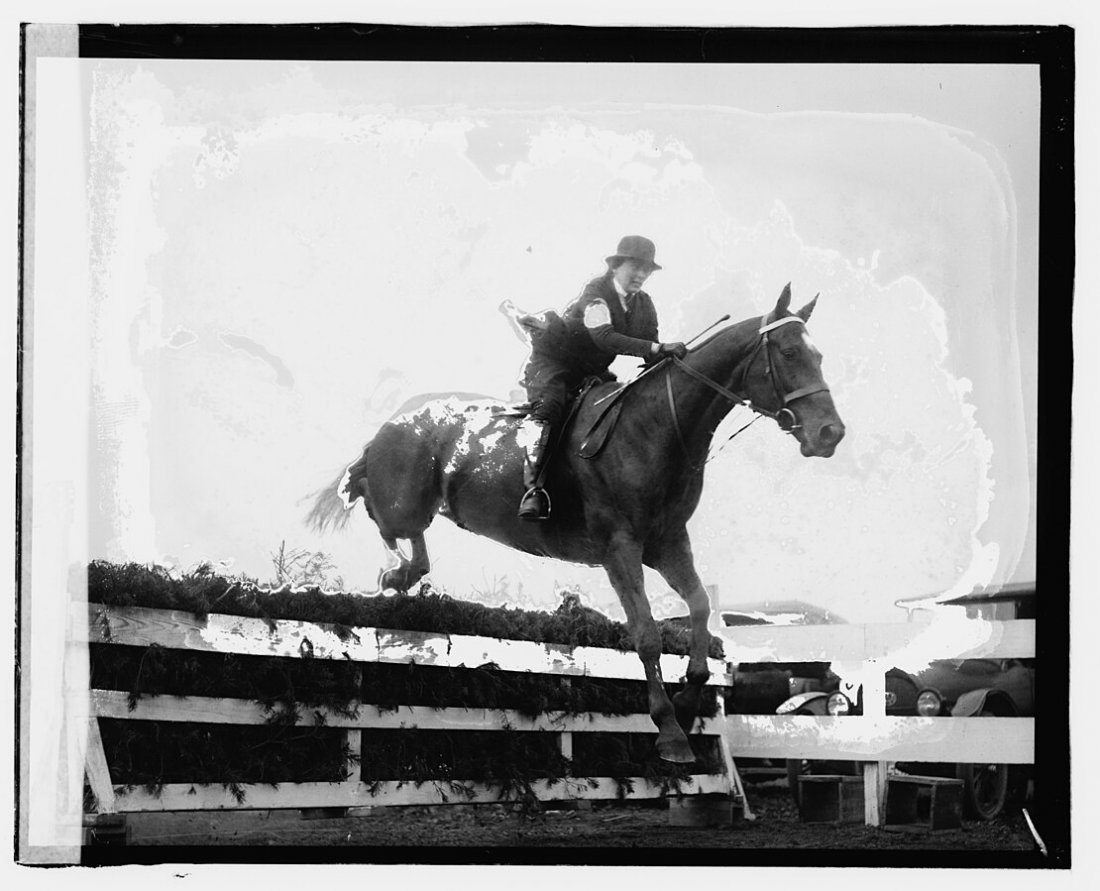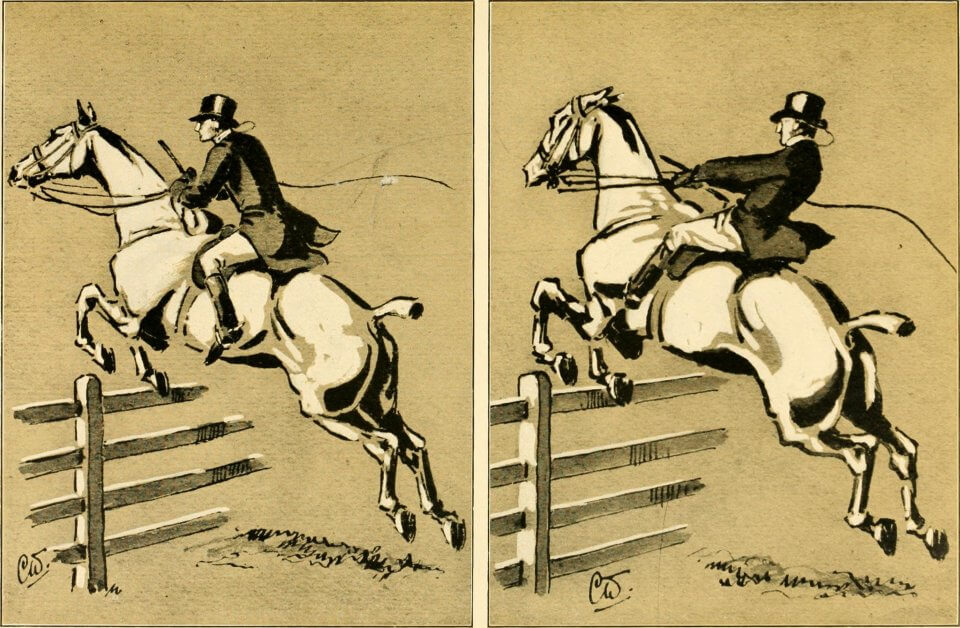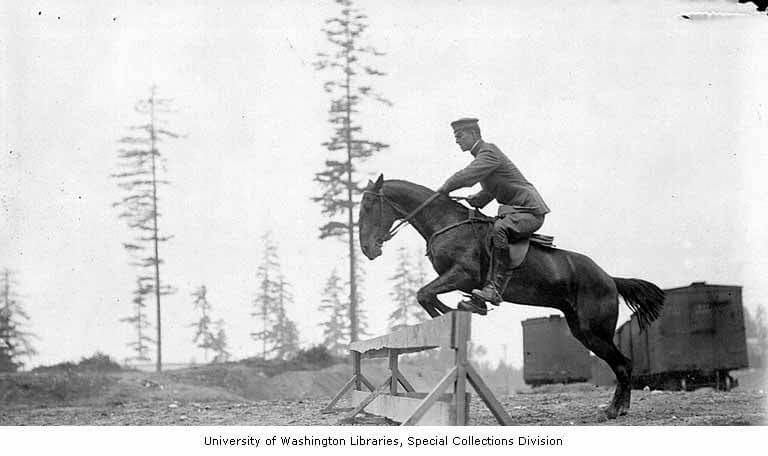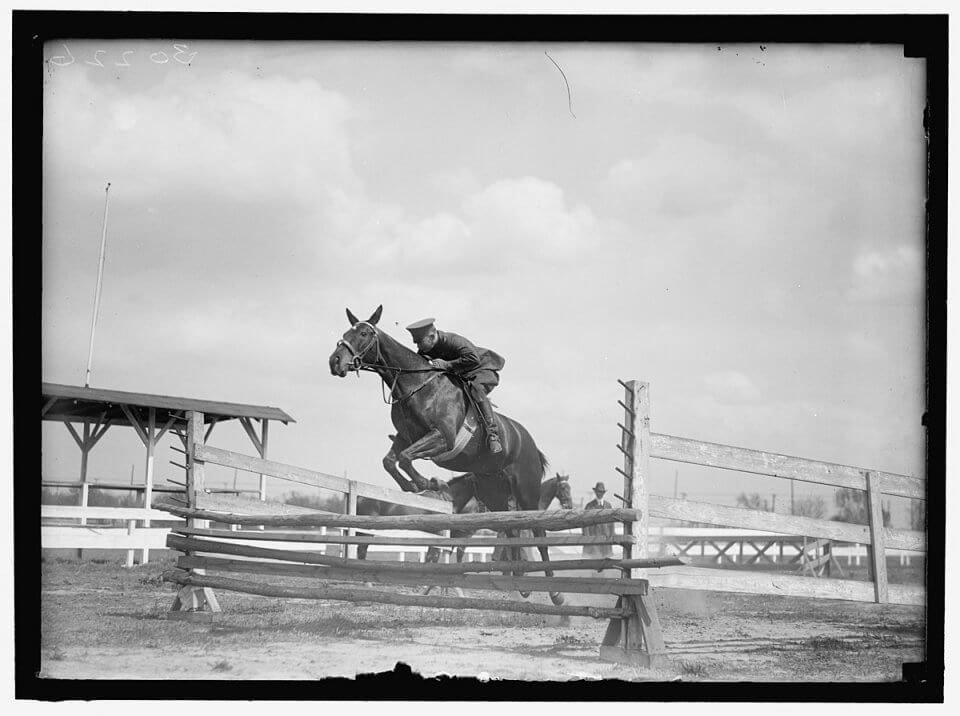
Hunter classes have come under scrutiny. Shows have changed format over time, and with it, the style of riding. There has been criticism of today’s riders, claiming they are laying on the neck, perching, too far forward, trying to hard to look “pretty,” and this is what it takes to earn a ribbon.
I saw a post where someone blamed blame George Morris and hunt seat equitation for recent rider deaths, and claimed that it would not have happened using the old Ft Riley riding style. I don’t know enough about the situations to verify one way or another, and I suspect this person didn’t either, so this seems in poor taste to claim this. I also saw someone request recommendations for a new instructor, specifically seeking someone who taught the Ft Riley method of riding, because they could not stand the hunter style. Luckily for them, this area is a sea of instructors so they probably won’t have an issue, but the default instruction style around here is usually hunt seat equitation – as evidenced by the shear amount of outraged hunter riders responding to their post.
It is a controversial topic – hunt seat riders don’t want their style to be deemed “unsafe.” There’s a lot of tradition and love of hunt seat. But, some riders are concerned, and that’s why they are turning to the Fort Riley method.
If you grew up riding hunters, as I did, this method sounds foreign. I will admit that at one point I just assumed everyone who jumped rode hunt seat, as that’s how I learned. But that is not the case. Riding style has been an ongoing evolution, changing as people come with newer methods to communicate and balance with their horses.
The Fort Riley method was one evolution.
The Training of Calvary
Many years ago, horses weren’t just a fun hobby, they were serious war equipment. They were a required force to win. Cavalry was an important part of the army, which mean humans and horses must be well trained and athletic in order to fight.
In 1887, the United States Cavalry School was set up at Fort Riley in Kansas. There, some of the best riders and instructors in the last century learned how to ride.
As time went on, the school picked up the influences of outside trainers. One huge influence was Captain Federico Caprilli, a captain in the Italian cavalry. He believed in going with the natural balance of the horse and interfering with the horse as little as possible. Before, people believed they should always have contact with the horse’s back, and over jumps they should lean heavily back, pulling on the horse’s mouth. It was thought this would lift the weight off the shoulders and allow them to jump better.

Caprilli instead believed in riders lifting their bodies off the horse’s back, and lean slightly forward, giving the horse their head to balance themselves. He demonstrated this technique during the 1906 Olympics, and Italy quickly begin to dominate international competitions.
This method of riding produced a better balanced horse. Lt. Col. John K Brown, Chief Instructor at Fort Riley, did further research on this jumping method using hundreds of photographs, determined that the correct method to jump a horse, “is for the rider to lean forward, with his buttocks off the saddle while approaching the jump, during the entire jump, and until the horse takes a stride or two after the landing.”
Horse and rider needed to be secure and able to handle whatever rough terrain the battlefield presented them. This new method created a stable and balanced seat for cross country, suitable for the demands of the cavalry. From this, the Board of Officers produced a series of training manuals called “Horsemanship and Horsemastership,” which cemented the military seat as forward and balanced.

Military Instructors
America had been resistant to the changes in riding, turning their noses up at Caprilli’s new methods. But the Fort Riley method leaked out, and people begin adapting it. In 1934, a new version of Horsemanship and Horsemastership was created. Lt. Col. Harry Chamberlin used his knowledge of the Fort Riley method to take the dry military manual and package it into a reference that all horseman could understand.

The Cavalry School disbanded after WWII, as machinery replaced horses. But many of the former students became instructors of this style.
Gordon Wright was one. He learned at Fort Riley and became an instructor there. When the school was disbanded, he begin teaching civilians, with well known students such as Bill Steinkraus and George Morris. More of his students won Maclay than any other trainer at the time. He also wrote a new version of the military manual, Learning to Ride, Hunt and Show, simplifying the principles of the Ft Riley method.
The Shift to Hunt Seat
As time went on, riding continued to evolve.
The Fort Riley method had criticism; it was said to be “hard.” It requires a great deal of strength and balance to be able to hold oneself up. George Morris, student of Gordon Wright, was aware of this. He figured out a new method that would assist riders with being able to jump. He came up with the idea of the crest release. With the rider using their hands to balance on the neck of the horse, they don’t have to have the same amount of strength and balance over jump.
Using the crest release, newer or weaker riders were able to jump. Jumping became easier to teach and the world of jumping was now opened for many. Although Morris may not have intended for crest releases to completely replace the old method, it basically took over. This technique is considered the standard for hunter riders today, and the Fort Riley method fell out of favor in the world of hunters. Critics of hunt seat claim that the current hunt seat equitation is a stylized version of true riding, as it evolved into something that would not be practical outside of the show ring.
Of course, outside of hunters, many still use the Fort Riley method. It’s the standard way for eventers and fox hunters as it’s suitable for a secure seat cross country. The United States Pony Club Manuals were written by Susan Harris, who was trained in the Fort Riley method. Europe and other areas of the world were not effected by hunt seat equitation. If you want to learn the Fort Riley method in America nowadays, your best bet would be to find an eventing trainer, or if you fit the requirements, join Pony Club.
The Fort Riley method was groundbreaking, helping to shape the way we think about horsemanship today. Its principles are all still relevant today, and continues to be a strong solid base of riding to equestrians.
Want to know more about the history of horses and riding?

Horse Trainers of a Different Era - An Equestrian Life
[…] a very good reason for this – from the 1900s and slowly dropping off towards 1950’s, riding was taught by cavalry men. The military refined riding styles, and then these cavalry men would go on to teach civilians. […]